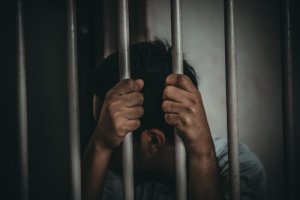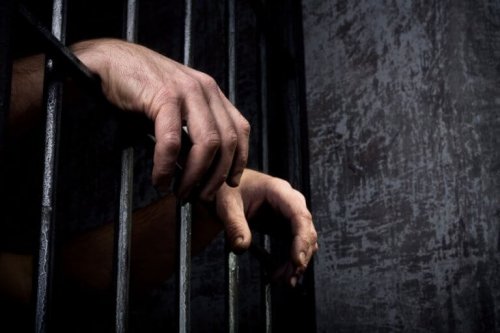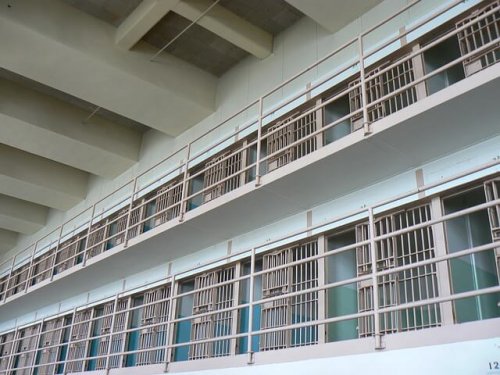Prison Education


Written and verified by the psychologist Gema Sánchez Cuevas
There’s a debate about whether or not education in closed environments such as prisons is effective. Is it a kind of utopia? Will the students see results? While there are plenty of opinions about prison education, a branch of social education called social prison education can shed some light on these questions.
“People debate whether or not you can truly educate someone who’s incarcerated. If you propose educational or liberating socioeducational praxis in a closed, punitive, and violent setting, what is it? Is it a utopia? A paradox? A contradiction?” [translation]
-José del Pozo and Fanny T. Añaños-
Scarfó (2002) explains that education is the foundation of citizen identity. “He who doesn’t receive or use this right loses the opportunity to belong to society. He cannot participate in a real way or be a true citizen who exercises his rights and fulfills his duties in favor of developing society.” [translation]
From these ideas, the Resolution on Education in Correctional Settings was born. It came out of the Education International 5th World Congress (Berlin, Germany; July of 2007). This resolution explains the need to include social education in correctional facilities.
Prison education isn’t just a challenge. It’s a right and a deontological principle that should seek to develop each prisoner’s autonomy in spite of their incarceration. (2)

Prison Education Theories
Let’s look at some of the different theories on prison education in order to better understand this particular branch of social education.
Psychopathological Theories
This type of theory interprets criminal acts through the lens of individual psychopathological and biological factors. They have been very relevant in the history of delinquency and prison treatment. Authors such as Eysenck are great examples of these models. (1)
It’s also important to mention that from the social psychology school of thought, other authors provide ideas that don’t solely consider individual personality factors. (3, 4)
Sociological Theories
These kinds of theories are related to multidimensional and structural factors. Thus, they’re based on the idea that systems and social, educational, cultural, or familial relationships influence criminal etiology. (1) Some examples are the inequality of opportunities theory or the theory of social deviation. (5, 6)
Socio-Educational Theories
Professor Miguel Melendro explains that, during the last century, we’ve developed perspectives and models that enrich and markedly improve socio-educational intervention methods for disadvantaged populations.
Thus, some of the disciplines that have played a role in forming socio-educational models in prison education are:
- Behaviorist approaches.
- Dynamic perspectives.
- Constructivism.
- Systemic family therapy.
- Competence model.
- Popular education.
Socio-Educational Programs in Correctional Facilities
According to Garrido and Gómez (1995), prison education has traditionally followed scientifically technological models (within medical frameworks of the behavioral tradition that seek alignment of the subject, and present in positivist pedagogy).
Classic educational models in prisons try to get students to reproduce certain social frameworks without taking contextual and sociocultural variables into account. (1)
The programs that prisons use most often are generally corrective. They’re usually based on behavioral models of reinforcement or punishment. Those who implement these models tend to believe that they’re the best option. These models are divided into four groups:
- The psychological and psychoanalytical model.
- The biological-behavioral model.
- The factor model.
- The humanist model.
There are more humanistic and up-to-date models as well. They’re the following:
Participative Model
In the participative model, socio-educational rehabilitation in prison should involve the whole prison community, but especially the prisoners.
Consequently, the idea is that everyone carries out the process together and that the inmates voluntarily take on the rehabilitation process. (1, 9)
Autonomy Model
These are individualized and group educational programs. (10)
Gender Empowerment Model
These can have a two-pronged approach. The first is to help inmates overcome the sociocultural and structural criminalization of women with criminal records. (11, 12) The second is to develop equality between men and women in the prison setting. (13, 14)
Knowledge and Pedagogical Action Models
The crucial aspect of these models is a collective consensus about the work that inmates do in prison. It also places importance on inmates’ enjoyment of what they do, and the educational relationship between inmates and teachers. (1)

Liberation Models
These models believe that reentry renews prison intervention in the professional and structural dimension. Thus, the challenge is to convert prison spaces and concepts into possibilities for freedom.
As you can see, there are plenty of alternative prison education models. Nevertheless, it seems that behavioral and individual models still reign supreme today. Do you think it’s possible to develop any of these models in the near future?
All cited sources were thoroughly reviewed by our team to ensure their quality, reliability, currency, and validity. The bibliography of this article was considered reliable and of academic or scientific accuracy.
-
del Pozo Serrano, F. J., & Añaños-Bedriñana, F. T. (2013). La Educación Social Penitenciaria:¿ De dónde venimos y hacia dónde vamos?. Revista complutense de educación, 24(1), 47-68.
- AYUSO, A. (2003). Visión crítica de la reeducación penitenciaria en España. Valencia: Nau Llibres.
- GLASER, R. (1984). Education and thinking: The role of knowledge. American Psychologist, 13, p.p.145-182.
-
Vygotsky, L. S. (1980). Mind in society: The development of higher psychological processes. Harvard university press.
-
Cloward, R., & Ohlin, L. (1960). Delinquency and Opportunity: A Theory of Delinquent Gangs. New York, NY: FreePress.
-
Wilklins, L. T. (1965). Social Deviance: Social Policy, Action, and Research. Prentice Hall.
-
Garrido, V., & Gómez, A. M. (1995). La educación social en el ámbito penitenciario. Comunicación, lenguaje y educación, 7(3), 53-60.
-
Morris, E. K., & Braukmann, C. J. (1987). The dimensions of applied behavior analysis for crime and delinquency. In Behavioral Approaches to Crime and Delinquency (pp. 27-59). Springer, Boston, MA.
-
Ayuso, A. (2000). La intervención socioeducativa en el tratamiento penitenciario. Pedagogía social: revista interuniversitaria, (6), 73-99.
-
Pantoja, L. (2010). Actuación socioeducativa con mujeres presas: el papel de los educadores social. Las mujeres en las prisiones. La educación Social en contextos de riesgo y conflicto, T. Fanny Añaños (coord.). Barcelona: Gedisa, 101-122.
-
Juliano, D. (2010). La criminalización de las mujeres. Estigmatización de las estrategias femeninas para no delinquir. Las mujeres en las prisiones. La educación social en contextos de riesgo y conflicto, 25-44.
-
Almeda, E. (2010). Privación de libertad y mujeres extranjeras. Viejos pre.
- YAGÜE, C. (2008). Mujeres y madres en prisión. Intervención basada en necesidades y demandas. enFanny AÑAÑOS, Francisco J. DEL POZO, e Iosifina MAVROU (coords.), Educación social en el ámbito penitenciario: mujeres, infancia y familia Natívola SL, Granada.
-
Yagüe, C. (2010). Panorama actual de la situación de las mujeres y madres en los centros penitenciarios españoles. El programa de igualdad. Las mujeres en las prisiones. La educación Social en contextos de riesgo y conflicto. Barcelona, 183-200.
This text is provided for informational purposes only and does not replace consultation with a professional. If in doubt, consult your specialist.








